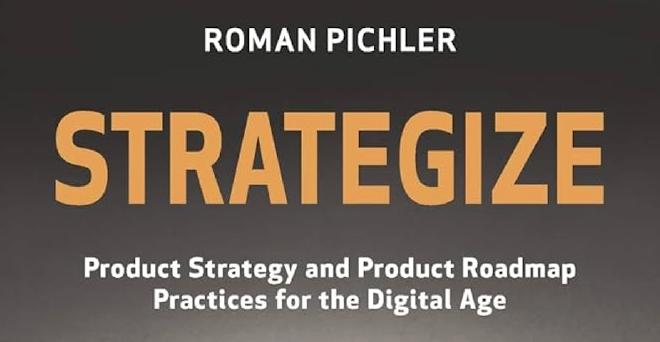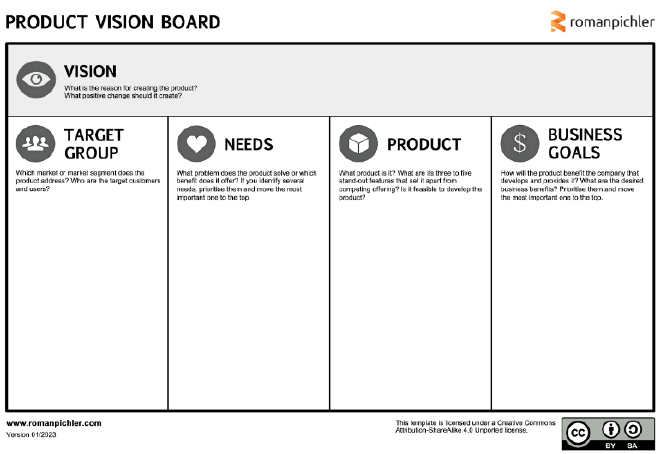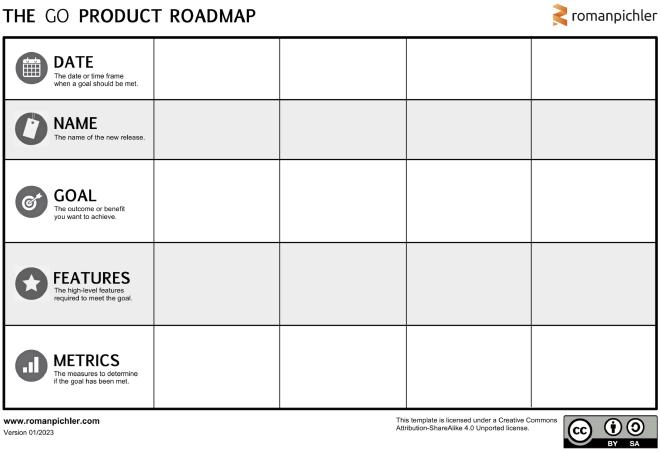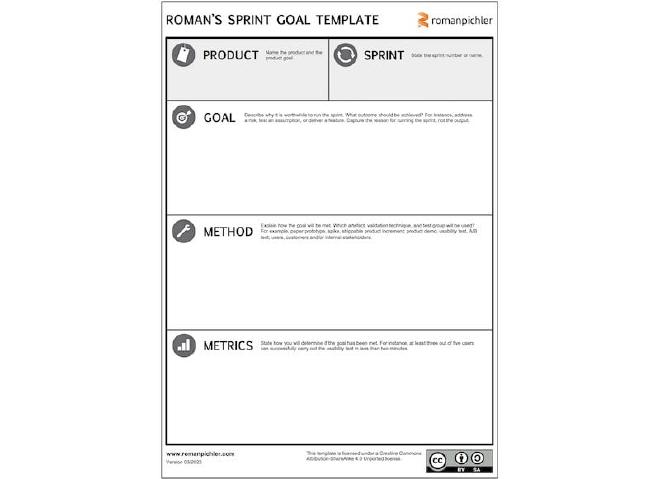
Essentially, all models are wrong, but some are useful.
– Georges E.P. Box
As I teach all the novice product managers for whom I introduce product management, it is interesting to use models like those of Roman Pichler because they provide a framework and an approach that guides the implementation of a product approach. But they remain models that will certainly need to be adapted to the contexts in which they are applied.
Product approach#

Roman Pichler breaks down his Product approach into 5 artefacts, from the most strategic to the most tactical:
- The product vision describes the ultimate reason why the product is created;
- The product strategy indicates how the vision will be achieved;
- The product roadmap indicates how the strategy will be implemented;
- The product backlog contains the details needed to develop the product as described in the roadmap, including the epics and user stories.
- The sprint goal describes the purpose of a sprint and indicates why it is worth undertaking this sprint.
Product vision board#

This cartouche helps you to describe, visualise and validate your product’s vision and strategy. It identifies the target group, the needs, the main characteristics and the company’s objectives. The vision thus described becomes the North Star of the Product team working to fulfil this vision.
In my experience, I use workshops such as User role modeling and Impact mapping to define this cartouche. It’s extremely effective!
Download the Product vision board templateGoal-oriented product roadmap#

Unlike traditional feature-based roadmaps, the GO product roadmap is goal-oriented. Its objectives describe outcomes or benefits such as user acquisition, activation and retention, which form the backbone of the plan. This moves the discussion from functionality to value creation, making intelligent investment decisions and aligning stakeholders and development teams. This roadmap is a very simple and effective document for communicating and discussing with your stakeholders.
An Impact mapping approach can be used to fill this template effectively.
Download the GO product roadmap templateSprint goal board#

A sprint goal, if applied correctly, states the outcome of the sprint and guides the work of the development team. Unfortunately, many teams don’t use sprint goals at all or apply them to state the stories to be implemented rather than the purpose of the sprint. Roman Pichler’s template helps you formulate effective sprint goals by answering the following three questions: Why do the sprint? How will you achieve the desired result? And how will you know when the objective has been achieved?
Download the sprint goal template